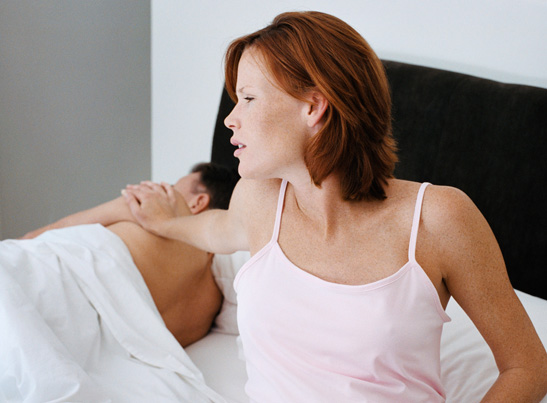Contractions a few weeks early? Here’s the scoop on Braxton-Hicks.
When Raelynn Glispin experienced contractions during the 36th week of her first pregnancy, they caught her by surprise; she wasn’t sure what they were.
“When you’ve never had a contraction before, you aren’t positive if it’s Braxton Hicks or actual labor,” says Glispin, a mother of two in Oxford, MA. “With my second baby, I clearly knew the difference and wasn’t surprised.”
Braxton Hicks, so named because an English doctor named John Braxton Hicks first identified them in 1872, are also known as “practice” contractions or “false labor” and can happen as early as the 22nd week. Physicians aren’t sure what triggers them, but they equate the movements to priming the uterus for birth.
“They are exercising the muscle and preparing the uterus for labor,” says Scott Chudnoff, M.D., an obstetrician at Montefiore Medical Center and an assistant professor of obstetrics and gynecology at Albert Einstein College of Medicine in New York City. “These contractions can last for a few seconds up to a couple of minutes, then they will wear off and release.”
What to Expect
As with true labor contractions, 10 women will give 10 different descriptions of what Braxton Hicks contractions feel like, says Coral Slavin, Ph.D., who owns Well-Rounded Maternity Center in Menomonee Falls, WI. “I’ve heard them described as a painless tightening in the belly, to feeling like menstrual cramps, to a pain that circles from front to back,” says Slavin, who is also a doula.
For Glispin, Braxton Hicks felt like a tightening of her stomach muscles. Another person could feel her belly stiffen from the outside, she says, but the contractions of real labor—when she eventually experienced them—felt like they were taking place on the inside.
Allie Compton of Washington, D.C., experienced many of these practice contractions during her first pregnancy. Her birth assistant assured her that women who have lots of Braxton Hicks tend to have faster labors, which held true. Compton’s son was born just three and a half hours after she dilated to three centimeters.
You’re most likely to have Braxton Hicks contractions during the third trimester. Chudnoff says that women tend to be nervous and concerned when they happen, but they’re perfectly normal.
The Difference
Braxton Hicks aren’t always easy to distinguish from true labor contractions, Chudnoff says, but he suggests you pay attention to what else is going on with your body at the same time.
A mom-to-be who is experiencing contractions along with other signs of labor—fluid leakage, vaginal bleeding and/or discharge, increased pelvic pressure, nausea or vomiting—and hasn’t been told that it’s safe for her to deliver should call her doctor right away.
But if you’re thirsty or it’s possible that you’re dehydrated, the pains could be Braxton Hicks; try drinking water and see if the contractions go away. Changing your position or level of activity can also halt Braxton Hicks. Slavin says if you feel contractions while lying in bed, get up and walk around for a while and see if the contractions stop. Likewise, if you’re very active and busy, stop and sit down or lie on your left side. If you’re in labor, the contractions will continue.
The biggest difference, in fact, between Braxton Hicks and actual labor is that Braxton Hicks contractions go away, but labor does not. When your pains are consistently getting closer and don’t let up, you’re probably in labor and should call your care provider.
Chudnoff believes all pregnant women have Braxton Hicks contractions, but some notice them more than others and seem to experience them more often. How can that be? What you feel depends on how in tune you are with your own body and pregnancy, as well as how active you are. If you’re moving around a lot, you may not notice these practice contractions as much, he says. So in the last weeks of your pregnancy, stay aware of how your body is feeling, drink lots of water, and savor the anticipation—it’ll be over in no time.
–Heather Larson
Heather Larson’s articles also appear in Arthritis Today, Better Homes and Gardens, and Yoga Journal.
